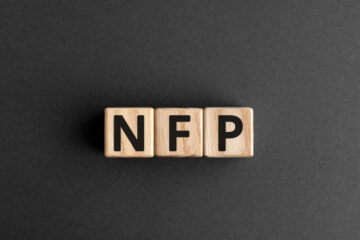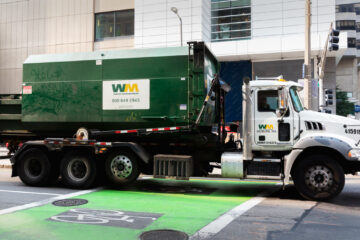Car buyers still face shortages and rising prices.
Buying a used car remains expensive even as supply chain bottlenecks have eased up, pushing the average loan amount to $28,506.
Consumers are still relying heavily on financing for the purchase of their cars and the average loan amount rose by 8.59% year-over-year, according to credit score company Experian.
There are some glimmers of light, though.
“Since the start of the inventory shortage, used vehicle values rose at a staggering rate, and that appears to be slowing, which is a positive sign for consumers looking to purchase a vehicle,” said Melinda Zabritski, senior director of automotive financial solutions at Experian. “While average loan amounts and monthly payments are continuing to grow, there are many contributing factors, such as the rise in interest rates.”
The amount consumers are borrowing to finance a used car is rising at a slower rate. During the third quarter of 2021, Experian reported a 21.37% year-over-year increase. In the third quarter of this year, the amount rose 8.6%.
Used cars have seen their values soar as the number of new cars available fell due to supply chain challenges from the global pandemic the crimped semiconductor chip supplies.
The lack of new inventory resulted in many drivers choosing to purchase used cars, but the high demand increased prices.
The average loan amount for a new vehicle also reported a significant increase, rising to $41,665 in the third quarter of 2022 from $37,753 in the third quarter of 2021.
Used Car Loan Interest Rates Exceed 9%
Interest rates for both used and new car loans continue to rise due to the Federal Reserve increasing interest rates in an effort to curb inflation.
The average interest rate during the third quarter was 5.16% for new vehicle loans and 9.34% for used, up from 4.09% and 8.12% from 2021, according to Experian’s data.
“Interest rates have climbed for all borrowers this year – consumers, businesses, and governments alike,” Greg McBride, chief financial analyst for Bankrate, a New York-based financial data company, told TheStreet.
“Used car rates are at an 11-year high, as are new car loan rates,” he said. “To put that in context, the Federal Reserve’s benchmark rate is the highest since 2008, so auto loan rates haven’t increased quite as fast.”
The reason interest rates are higher for used auto loans is because there is greater risk of delinquency or default on a loan for an older vehicle, McBride said.
“If the car breaks down, it is less likely to be under warranty and if the vehicle is in the repair shop, the borrower may have trouble getting to work or keeping up with the payments,” he said.
Auto Loans Are Getting Longer
Drivers are also taking out lengthier loans, increasing the overall amount of money they are paying for interest in many instances.
The average vehicle loan term rose to 69.7 months for new vehicles during the third quarter from 69.5 months during the third quarter in 2021.
The lengthier loan terms occurred in used vehicles, rising to 68.08 months during the third quarter from 66.97 months in the third quarter 2021.
Before consumers obtain a car loan, they should get copies of their credit report and make sure there aren’t any errors that could be “inadvertently torpedoing your credit score,” McBride said.
Shop around for your financing, comparing banks, credit unions, and online lenders and get it lined up before you go car shopping, he recommends.
“Not only does this set boundaries around the amount you can spend, but it gives you the ability to negotiate the price of the car independent of the financing,” he said. “You aren’t limited to whatever financing the dealer offers.”
.A growing number of consumers are obtaining auto loans from credit unions instead of going to banks, which had traditionally financed the most auto loans.
Credit unions owned 28.4% of vehicle loans during the third quarter, a 40% year-over-year increase, compared to 20.2% during the third quarter in 2021.
Market share of auto loans declined for banks to 27.3% in the third quarter from 32.5% in during the third quarter in 2021.
The leasing of new vehicles declined to 18% in the third quarter from 27.3% in 2021.
Consumers are shifting to leasing larger vehicles, such as full-size trucks, and SUVs, which comprise of the top 10 most leased models.
Payments for leased cars are often lower than a payment with the average difference between a loan and lease payment at $133.
“Opting for a lease is one way that consumers look to manage their monthly payments, which is often how they shop for a vehicle,” Zabritski said. “Affordability will continue to remain top of mind as a decline in leasing, coupled with the lack of new vehicle inventory, will impact availability of used vehicles in a few years.”
The average credit score for auto loans continued to rise to 738 from 733 year-over-year for new vehicle loans and to 678 for used vehicle loans, Experian said.
Wyoming has the largest percentage of loans for used cars at 85.4%, while New York reported the lowest amount at 65.5%.
New Car Loan Payments Exceed $700
Auto loan payments broke the $700 level in July for the first time ever because consumers fueled their desire for bigger new vehicles as prices skyrocketed since the start of the global pandemic.
Smaller discounts from auto dealers along with rising prices for cars and interest rates for loans have thrust monthly payments above the $700 level, said Thomas King, president of the data and analytics division at J.D. Power, a Troy, Michigan-based data analytics company.
“The average monthly finance payment in July is on pace to hit a record high of $708, up $81 from July 2021,” he said.


